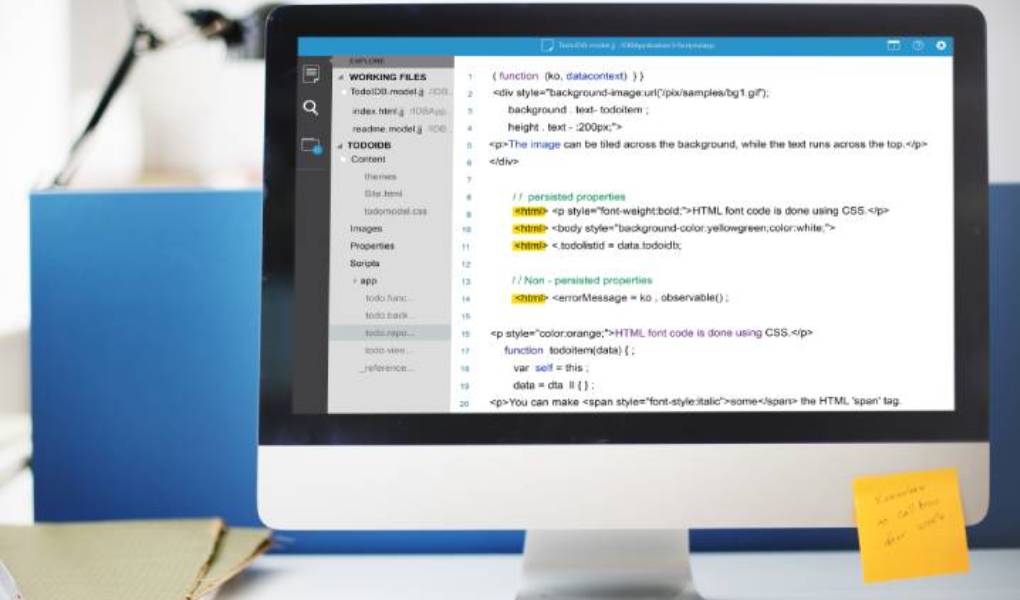Table of Contents
Node.Js
Node.js is a runtime that uses Google’s V8 engine to translate JavaScript to machine code. The technology is often used to write microservices, including online games, chats, video conferencing, and real-time, data-intensive IoT devices and applications.
There are several main reasons for this:
- A powerful core based on the Google V8 engine
- The engine used in the Node.js implementation was initially designed for the Chrome browser.
- A rich ecosystem built on a modular basis
- Node.js code is developed in separate files called modules or packages. This fits perfectly with the concept of microservices. NPM (Node Package Manager) makes it easy to find stable, mature modules for specific needs used by thousands of other developers. They are easy to deploy and include test suites to ensure they work.
- Event-driven and asynchronous programming with non-blocking I / O. Thanks to them, applications are written in Node.js can process requests with minimal response time.
- Low consumption of RAM. This becomes a significant advantage with a large number of microservices.
- Seamless JSON support. While other server-side technologies also use the JSON format, Node.js does this without any additional transformations using JavaScript. This is especially useful when you need to create a RESTful API to support NoSQL databases like MongoDB.
Node.js Frameworks For Microservices: Which Are Suitable
Let’s look at several frameworks suitable for developing microservices in Node.js:
- Express is the most popular web framework for Node.js applications.
- It provides a rich feature set and has a strong community. Express is stable, flexible, and secure.
- Koa is an enhancement to Express. It makes full use of the latest Node.js features, works without callbacks, and has a powerful error handling system. Like Express, Koa is a microframework but lighter and more powerful.
- Nest is a platform for developing scalable applications. It is used when there is a need for a more functional environment compared to Express and Koa. In micro-frameworks, many dependencies have to be installed manually: logging, authentication, database connection, and more. At Nest, most of these features come out of the box.
- LoopBack is a highly extensible Express-based framework. In 2019, he was awarded the API-2019 award as the best API Middleware solution. It is a good choice if you need to create dynamic end-to-end REST APIs quickly.
Java
Java was created in the 1990s and is still one of the most popular programming languages, including for microservice development, due to the following features:
- Extensive community and rich ecosystem. It is easier to find software developers to work with Java. Also available for this language is perhaps the most comprehensive collection of libraries. Most of them are portable to other JVM languages.
- Readability of the code. Java annotations make it easier to work with microservices, especially when using frameworks like Spring Boot.
- OOP support. Java is an Object-Oriented Programming Language (OOP), which makes it preferred for resource reuse.
- Static type checking. This increases the security of programs.
- Support for multiple languages in the JVM. Using Java allows developers to experiment with other languages and platforms within a single application, in line with the concept of a microservice architecture easily. There is a large selection of languages running on the JVM: Java, Kotlin, Groovy, Scala, Clojure.
- With Java EE standards, They are well suited for implementing microservices such as JAX-RS for APIs, JPA for data processing, CDI for Dependency Injection, and lifecycle management.
- Language development. The language is still evolving, and new features appear regularly.
Many people write off Java when choosing a language for microservices development, citing high memory consumption and slow startup due to the JVM in use. However, Java continues to evolve. In 2019, the GraalVM virtual machine was introduced, designed to reduce startup time for JVM-based applications and make it easier to build “multilingual” applications.
Java Frameworks For Microservices: Multiple Options
Java has many frameworks that are great for microservices. Let’s consider a few of them:
- Spring Boot is currently the most mature and popular Java framework for writing microservices. It has a complete set of tools you need, including service discovery, load balancing, Cloud Native support, security, integration with monitoring tools, and more. Many developers choose Spring Boot for microservices because of its stability and large community.
- Vert. X is a set of tools from the Eclipse Foundation for building JVM-based reactive microservices. Vert. X is multilingual and supports many languages: Java, Scala, Groovy, Kotlin, and even JavaScript. It offers several asynchronous programming models and allows you to process more requests with fewer resources compared to traditional blocking I / O frameworks.
- Micronaut, Qarqus, and Helidon are new frameworks created over the past three years and designed to develop high-performance microservices. They use GraalVM, so they start quickly and consume less memory compared to Spring Boot.
- Dropwizard is a valuable set of tools for building RESTful web services. It is a cross between a library and a framework. It will eliminate the need to link and configure separately each required library. Dropwizard comes with libraries like Jetty, Jersey, Jackson, Metrics, Guava, and many more by default.
Also Read: Safe, Modern Banking



